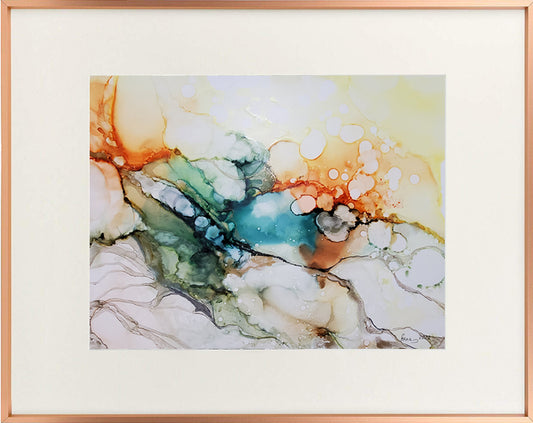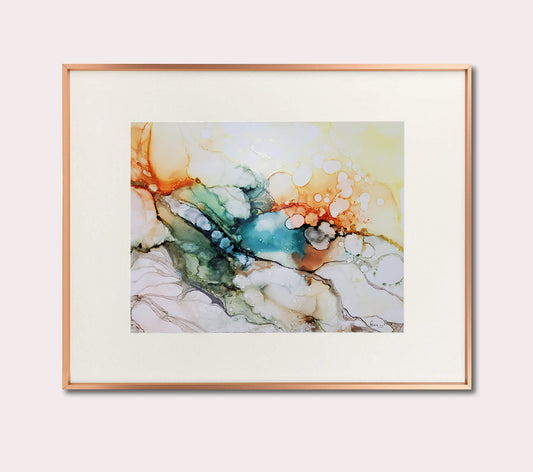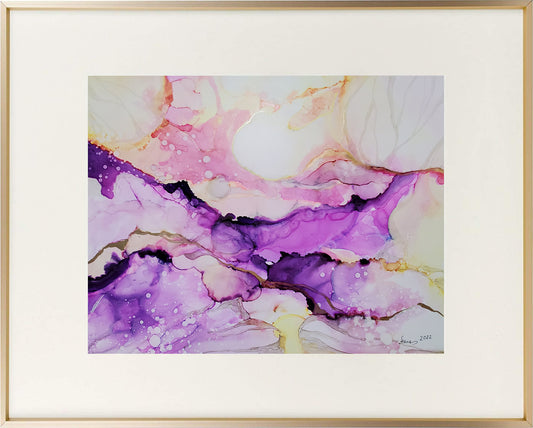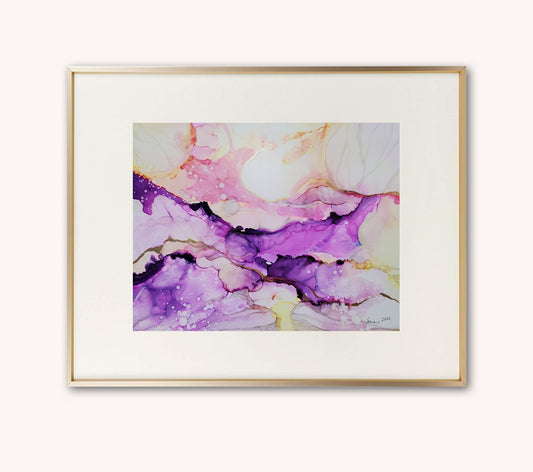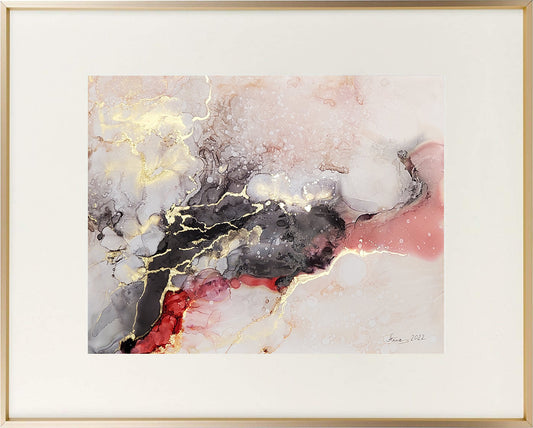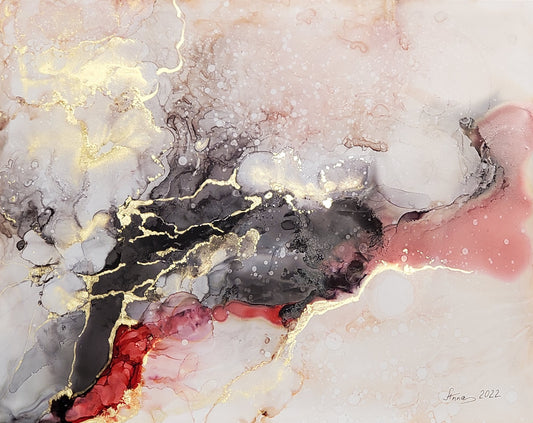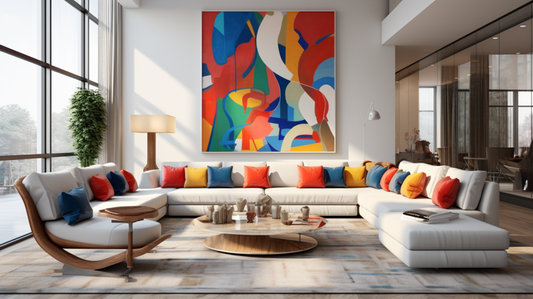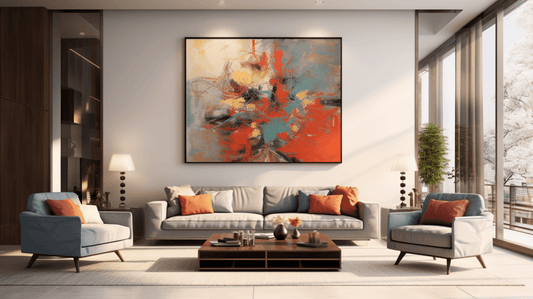
Sonia Delaunay, 1914, Prismes électriques, oil on canvas
Abstract painting is a form of art that does not attempt to represent an accurate depiction of a visual reality, but instead uses shapes, colors, forms, and gestural marks to achieve its effect¹. Abstract painting is considered one of the purest forms of expression, as it allows its creator to freely communicate visually without the constraint of forms found in objective reality³. The approaches found within abstract painting encompass many movements, such as German Expressionism, Fauvism, Cubism, and Abstract Expressionism³.
However, abstract painting is not as easy as it may seem. Many people who are unfamiliar with abstract art may think that it is simply a matter of splashing paint on a canvas without any skill or intention. This is far from the truth. Abstract painting requires a lot of creativity, imagination, experimentation, and knowledge of the elements and principles of art. In this article, we will explore some of the challenges that abstract painters face and how they overcome them.
WHAT IS THE MEANING OF ABSTRACT ART?
One of the main challenges of abstract painting is to convey a meaning or a message through the use of non-representational forms. Unlike figurative or realistic art, which relies on recognizable images and symbols to communicate with the viewer, abstract art does not have a clear or fixed meaning. Instead, abstract art is open to interpretation and invites the viewer to engage with their own emotions, thoughts, and experiences⁴.
This can be both liberating and frustrating for the abstract painter. On one hand, the abstract painter has the freedom to express themselves without being limited by the rules of representation or realism. They can explore their own inner world and experiment with different materials, techniques, and styles. On the other hand, the abstract painter may struggle to find a way to communicate their vision and intention to the viewer. They may wonder if their work is understood or appreciated by others. They may also face criticism or rejection from those who do not appreciate or value abstract art.
To overcome this challenge, the abstract painter needs to have a clear idea of what they want to say with their work and how they want to say it. They need to have a purpose and a direction for their painting. They also need to be confident and trust their own artistic voice. They should not be afraid to express themselves honestly and authentically, even if their work is not accepted by everyone. They should also be open to feedback and constructive criticism from others who can help them improve their work.
HOW TO CREATE AN EFFECTIVE COMPOSITION IN ABSTRACT PAINTING?
Another challenge of abstract painting is to create an effective composition that balances the elements and principles of art. A composition is the arrangement of visual elements in a work of art that creates a sense of harmony, unity, contrast, movement, rhythm, emphasis, proportion, and variety⁵. A good composition can make a work of art more appealing, engaging, and dynamic.
However, creating a good composition in abstract painting can be difficult because there are no rules or guidelines to follow. Unlike figurative or realistic art, which often follows the principles of perspective, proportion, and anatomy, abstract art does not have any reference points or models to imitate or copy. Instead, the abstract painter has to rely on their own intuition and creativity to create a composition that works for them.
To overcome this challenge, the abstract painter needs to have a good understanding of the elements and principles of art and how they can be applied in different ways. They need to experiment with different shapes, colors, forms, lines, textures, values, and spaces in their work. They need to pay attention to how these elements interact with each other and create visual effects such as balance, contrast, harmony, tension, movement, etc. They also need to consider how these elements relate to the overall theme or mood of their work.
HOW TO FIND INSPIRATION FOR ABSTRACT PAINTING?
A third challenge of abstract painting is to find inspiration for new ideas and concepts. Inspiration is the spark that ignites the creative process and motivates the artist to create something original and meaningful. Inspiration can come from many sources such as nature, music, literature, art history, personal experiences, emotions, dreams, etc.
However, finding inspiration for abstract painting can be challenging because it requires a lot of imagination and curiosity. Unlike figurative or realistic art, which often draws inspiration from observable phenomena or existing images, abstract art requires the artist to invent something new and unique from their own mind. This can be daunting and overwhelming for some artists, especially when they face creative blocks or lack of motivation.
To overcome this challenge, the abstract painter needs to cultivate a habit of seeking and exploring new sources of inspiration. They need to expose themselves to different forms of art and culture, such as visiting museums, galleries, concerts, theaters, etc. They need to read books, magazines, articles, blogs, etc. that can stimulate their thoughts and imagination. They need to observe and appreciate the beauty and diversity of nature and the world around them. They need to reflect on their own feelings, memories, dreams, and aspirations. They also need to experiment with different materials, techniques, and styles that can inspire them to create something new and different.
WHAT ARE THE BENEFITS OF ABSTRACT PAINTING?
Despite the challenges that abstract painting poses, it also offers many benefits for the artist and the viewer. Some of the benefits of abstract painting are:
- It enhances the creative thinking and problem-solving skills of the artist. Abstract painting requires the artist to think outside the box and find innovative ways to express themselves through non-representational forms. It also requires the artist to overcome various obstacles and difficulties that arise during the creative process.
- It develops the artistic skills and techniques of the artist. Abstract painting allows the artist to experiment with different materials, tools, methods, and styles that can expand their artistic repertoire and improve their craftsmanship. It also allows the artist to explore their own strengths and weaknesses as an artist and learn from their mistakes and successes.
- It provides a therapeutic outlet for the artist. Abstract painting can be a way for the artist to release their emotions, thoughts, and feelings in a safe and constructive way. It can also be a way for the artist to cope with stress, anxiety, depression, or trauma that they may experience in their life. It can also be a way for the artist to express their joy, happiness, gratitude, or love for themselves or others.
- It stimulates the aesthetic appreciation and critical thinking of the viewer. Abstract painting can be a way for the viewer to experience beauty, wonder, curiosity, and intrigue in a work of art. It can also be a way for the viewer to challenge their assumptions, expectations, and preferences in art. It can also be a way for the viewer to engage with their own emotions, thoughts, and experiences in relation to the work of art.
CONCLUSION
Abstract painting is a form of art that does not attempt to represent an accurate depiction of a visual reality but instead uses shapes, colors, forms, and gestural marks to achieve its effect¹. Abstract painting is considered one of the purest forms of expression as it allows its creator to freely communicate visually without the constraint of forms found in objective reality³. However, abstract painting is not as easy as it may seem. It poses many challenges for the artist such as conveying a meaning or a message through non-representational forms, creating an effective composition that balances the elements and principles of art, and finding inspiration for new ideas and concepts. To overcome these challenges, the abstract painter needs to have a clear purpose and direction for their work, a good understanding of the elements and principles of art, and a habit of seeking and exploring new sources of inspiration. Despite these challenges, abstract painting also offers many benefits for the artist and the viewer such as enhancing the creative thinking and problem-solving skills of the artist, developing the artistic skills and techniques of the artist, providing a therapeutic outlet for the artist, and stimulating the aesthetic appreciation and critical thinking of the viewer.
Intrigued by the fascinating world of abstract art? Your artistic journey doesn't have to end here. Explore a mesmerizing collection of captivating and modern abstract artworks by visiting our Abstract Art Collection and Shop. Anna Manukyan's gallery is a treasure trove of creativity, where you can not only see but also acquire unique pieces that resonate with your aesthetic sensibilities. Dive into a realm of imagination, emotion, and innovation as you discover the transformative power of abstract art. Don't miss the opportunity to enrich your surroundings with these thought-provoking creations. Start your exploration now and let the art on this page inspire your soul.

